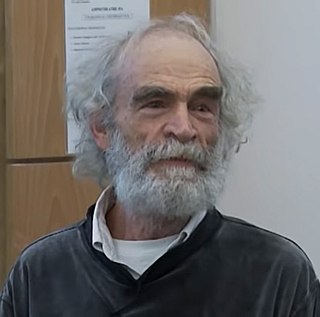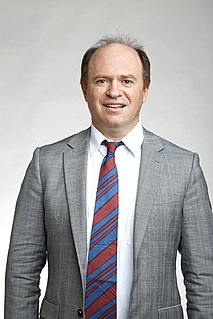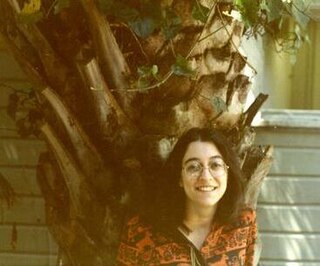Related Research Articles

In the mathematical field of knot theory, a knot invariant is a quantity defined for each knot which is the same for equivalent knots. The equivalence is often given by ambient isotopy but can be given by homeomorphism. Some invariants are indeed numbers (algebraic), but invariants can range from the simple, such as a yes/no answer, to those as complex as a homology theory. Research on invariants is not only motivated by the basic problem of distinguishing one knot from another but also to understand fundamental properties of knots and their relations to other branches of mathematics. Knot invariants are thus used in knot classification, both in "enumeration" and "duplication removal".
A knot invariant is a quantity defined on the set of all knots, which takes the same value for any two equivalent knots. For example, a knot group is a knot invariant.
Typically a knot invariant is a combinatorial quantity defined on knot diagrams. Thus if two knot diagrams differ with respect to some knot invariant, they must represent different knots. However, as is generally the case with topological invariants, if two knot diagrams share the same values with respect to a [single] knot invariant, then we still cannot conclude that the knots are the same.

Raoul Bott was a Hungarian-American mathematician known for numerous basic contributions to geometry in its broad sense. He is best known for his Bott periodicity theorem, the Morse–Bott functions which he used in this context, and the Borel–Bott–Weil theorem.
In mathematics, a Pisot–Vijayaraghavan number, also called simply a Pisot number or a PV number, is a real algebraic integer greater than 1, all of whose Galois conjugates are less than 1 in absolute value. These numbers were discovered by Axel Thue in 1912 and rediscovered by G. H. Hardy in 1919 within the context of diophantine approximation. They became widely known after the publication of Charles Pisot's dissertation in 1938. They also occur in the uniqueness problem for Fourier series. Tirukkannapuram Vijayaraghavan and Raphael Salem continued their study in the 1940s. Salem numbers are a closely related set of numbers.

Mikhael Leonidovich Gromov is a Russian-French mathematician known for his work in geometry, analysis and group theory. He is a permanent member of IHÉS in France and a Professor of Mathematics at New York University.

In mathematics, a Salem number is a real algebraic integer α > 1 whose conjugate roots all have absolute value no greater than 1, and at least one of which has absolute value exactly 1. Salem numbers are of interest in Diophantine approximation and harmonic analysis. They are named after Raphaël Salem.
In mathematics, the Mahler measureof a polynomial with complex coefficients is defined as

Grigory Aleksandrovich Margulis is a Russian-American mathematician known for his work on lattices in Lie groups, and the introduction of methods from ergodic theory into diophantine approximation. He was awarded a Fields Medal in 1978, a Wolf Prize in Mathematics in 2005, and an Abel Prize in 2020, becoming the fifth mathematician to receive the three prizes. In 1991, he joined the faculty of Yale University, where he is currently the Erastus L. De Forest Professor of Mathematics.

Kurt Mahler FRS was a German mathematician who worked in the fields of transcendental number theory, diophantine approximation, p-adic analysis, and the geometry of numbers.
In mathematics, the Bombieri norm, named after Enrico Bombieri, is a norm on homogeneous polynomials with coefficient in or . This norm has many remarkable properties, the most important being listed in this article.
Mathematics is a broad subject that is commonly divided in many areas that may be defined by their objects of study, by the used methods, or by both. For example, analytic number theory is a subarea of number theory devoted to the use of methods of analysis for the study of natural numbers.
Igor Rivin is a Russian-Canadian mathematician, working in various fields of pure and applied mathematics, computer science, and materials science. He was the Regius Professor of Mathematics at the University of St. Andrews from 2015 to 2017, and was the chief research officer at Cryptos Fund until 2019. He is doing research for Edgestream LP, in addition to his academic work.

Daniel T. Wise is an American mathematician who specializes in geometric group theory and 3-manifolds. He is a professor of mathematics at McGill University.
Ruth Kellerhals is a Swiss mathematician at the University of Fribourg, whose field of study is hyperbolic geometry, geometric group theory and polylogarithm identities.

Anatoly Borisovich Katok was an American mathematician with Russian-Jewish origins. Katok was the director of the Center for Dynamics and Geometry at the Pennsylvania State University. His field of research was the theory of dynamical systems.

Linda Preiss Rothschild is a professor emeritus of mathematics at the University of California, San Diego. Her thesis research concerned Lie groups, but subsequently her interests broadened to include also polynomial factorization, partial differential equations, harmonic analysis, and the theory of several complex variables.
Håkan Hedenmalm is a Swedish mathematician.

François Ledrappier is a French mathematician.
References
- ↑ David William Boyd at the Mathematics Genealogy Project
- ↑ Canadian Mathematical Society Inaugural Class of Fellows, Canadian Mathematical Society, December 7, 2018